Clover (Trifolium repens, commonly known as white clover) is a familiar sight in many lawns. To some, it’s a welcome addition that adds texture, supports pollinators, and stays green through drought. To others, it’s a nuisance—an invasive plant that competes with turfgrass and disrupts the appearance of a uniform lawn.
If you fall into the latter group, this article will give you a comprehensive understanding of why clover spreads, what encourages its takeover, and how to effectively control or eliminate it using cultural, mechanical, and chemical strategies.
1. Understanding Clover: Biology & Behavior
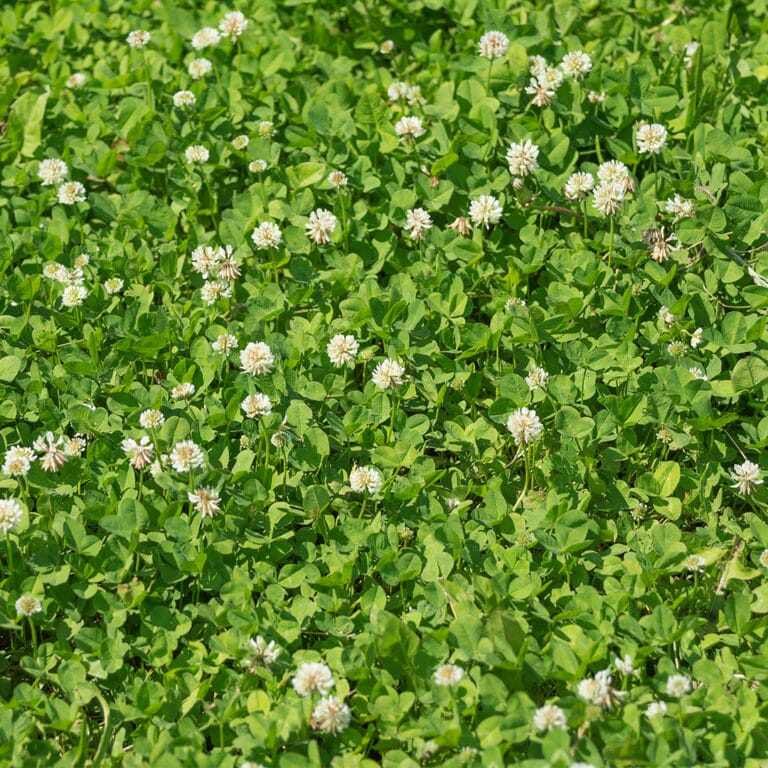
1.1 Growth Habit and Reproduction
Clover is a perennial legume that spreads both by seed and through creeping horizontal stems called stolons. These stolons root at various points, allowing clover to establish new plants even if the original is removed.
Clover also fixes atmospheric nitrogen, meaning it produces its own fertilizer with the help of bacteria in its root nodules. This gives it a major advantage in nutrient-poor soils.
1.2 Why Clover Invades Lawns
Clover often becomes dominant in lawns that are:
- Low in nitrogen – Since clover doesn’t rely on soil nitrogen, it thrives where grass struggles.
- Thin or patchy – Open soil gives clover room to spread.
- Cut too short – Short mowing exposes soil and weakens turf, favoring clover.
- Compacted – Poor soil structure hampers grass root growth, giving clover an edge.
- Out of balance in pH – Acidic or poorly maintained soil stresses turf and benefits clover.
In short, clover is a strong competitor where grass is weak. So the solution begins with strengthening your lawn.
2. Cultural & Preventive Strategies
The most sustainable way to stop clover from taking over is to improve lawn health and make conditions less favorable for clover.
2.1 Test and Amend Your Soil
Begin with a soil test. If your soil is too acidic, apply lime to raise the pH. More importantly, assess nitrogen levels. Since clover thrives in low-nitrogen soils, applying a slow-release nitrogen fertilizer can tip the scales in favor of turfgrass.
2.2 Mow Higher and More Strategically
Raise your mower height to about 3 inches or more (depending on grass type). Taller grass shades the soil and prevents clover seedlings from establishing. Also avoid removing more than one-third of the grass blade at a time to reduce stress on the lawn.
Frequent mowing can also prevent clover from producing seed heads and spreading further.
2.3 Aerate and Overseed
Core aeration reduces soil compaction and allows air, water, and nutrients to reach grass roots more effectively. After aeration, overseed with a dense, competitive grass type suitable for your region. This fills in gaps and crowds out clover.
2.4 Maintain Lawn Vigor Year-Round
A thick, healthy lawn is the best natural defense against clover. Ensure your turf is getting:
- Adequate water (deep and infrequent watering is best).
- Proper fertilization (especially nitrogen).
- Timely mowing (not too short or infrequent).
- Pest and disease management.
2.5 Use Corn Gluten Meal as a Pre-Emergent
Corn gluten meal works as a natural pre-emergent herbicide. It prevents clover seeds—and other weed seeds—from sprouting. Apply it in early spring or fall, but avoid using it when seeding grass, as it inhibits all seed germination.
2.6 Smother Patches
For small or isolated clover patches, you can cover them with black plastic, cardboard, or thick mulch for a few weeks to block sunlight. This kills the clover by starving it of light, but also affects the grass underneath, so plan to reseed afterward.
3. Mechanical & Manual Control
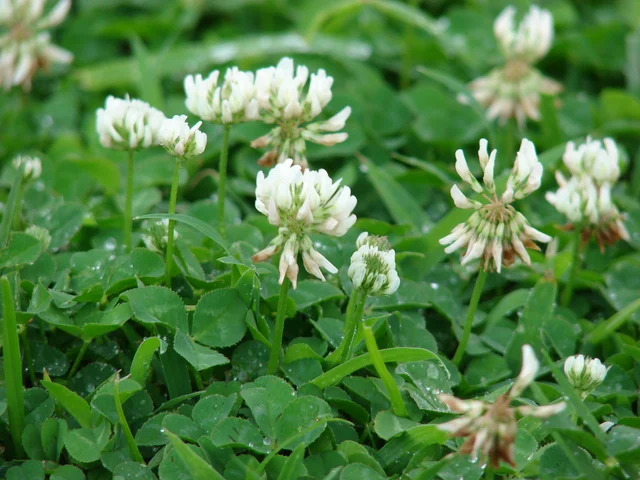
If clover has already taken root, there are physical methods to remove or reduce it.
3.1 Hand-Pulling or Digging
For small patches, hand-pulling is very effective, especially after rain when the soil is soft. Be sure to remove the entire root system and stolons to prevent regrowth.
3.2 Cutting Off Flower Heads
If you can’t remove the whole plant immediately, cut off the flower heads before they go to seed. This reduces future spread and seed bank buildup.
3.3 Trim Lawn Edges
Clover often creeps in from walkways, flower beds, or neighboring properties. Keep borders trimmed and edge your lawn to prevent clover from crossing into turf areas.
4. Chemical and Selective Herbicide Options
When cultural and mechanical efforts fall short, chemical control may be necessary. However, it should be used responsibly and selectively.
4.1 Choose the Right Herbicide
Look for a selective broadleaf herbicide that won’t harm grasses. Common active ingredients include 2,4-D, dicamba, and MCPP. These chemicals specifically target broadleaf plants like clover while leaving most grass types unaffected.
4.2 Apply at the Right Time
Timing matters. Apply herbicide when clover is actively growing—typically in spring or early fall. Avoid spraying during drought or extreme heat, which can damage your grass.
4.3 Use a Surfactant
Because clover leaves are waxy, adding a surfactant helps herbicide stick and absorb. This ensures better contact and more effective control.
4.4 Spot-Treat, Don’t Blanket Spray
Unless your lawn is completely overrun, avoid blanket spraying. Spot-treating targeted areas reduces chemical exposure and protects nearby plants, pets, and people.
4.5 Reseed After Herbicide Use
After applying herbicides, wait the recommended amount of time (often two to three weeks) before reseeding. This ensures the chemicals won’t interfere with grass seed germination.
5. Integrated Lawn Management Strategy
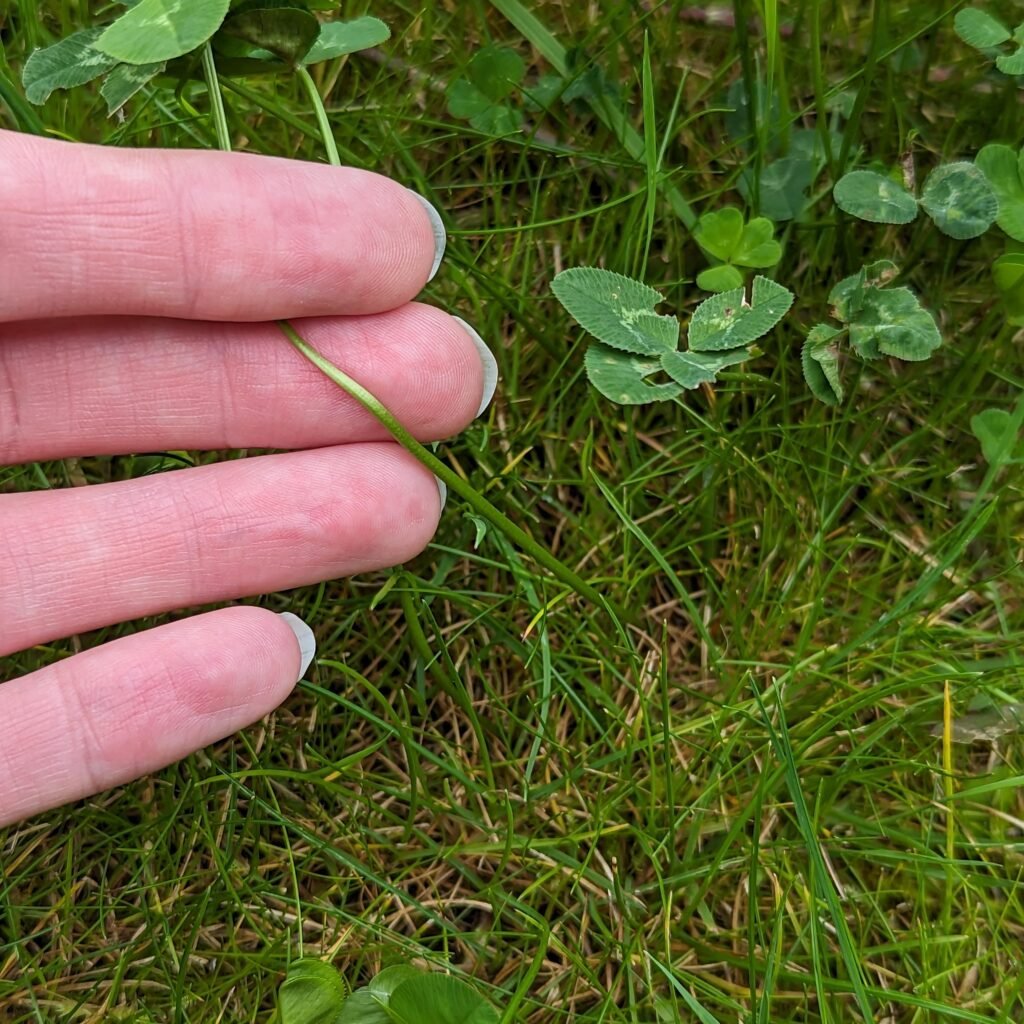
For long-term control of clover, use a combination of methods throughout the year. Here’s a sample plan:
Spring:
- Soil test and apply lime/fertilizer if needed.
- Apply corn gluten meal as a pre-emergent.
- Aerate and overseed if the lawn is thin.
- Begin mowing higher.
Summer:
- Spot-pull or smother clover patches.
- Maintain a regular mowing schedule.
- Fertilize with nitrogen to keep grass strong.
- Apply selective herbicide only if necessary.
Fall:
- Repeat soil test and correct deficiencies.
- Overseed thin spots.
- Apply herbicide when clover is active.
- Plan irrigation and maintenance for winter.
With consistency, your lawn will become thicker, healthier, and more resistant to clover invasion.
6. Common Objections and Considerations
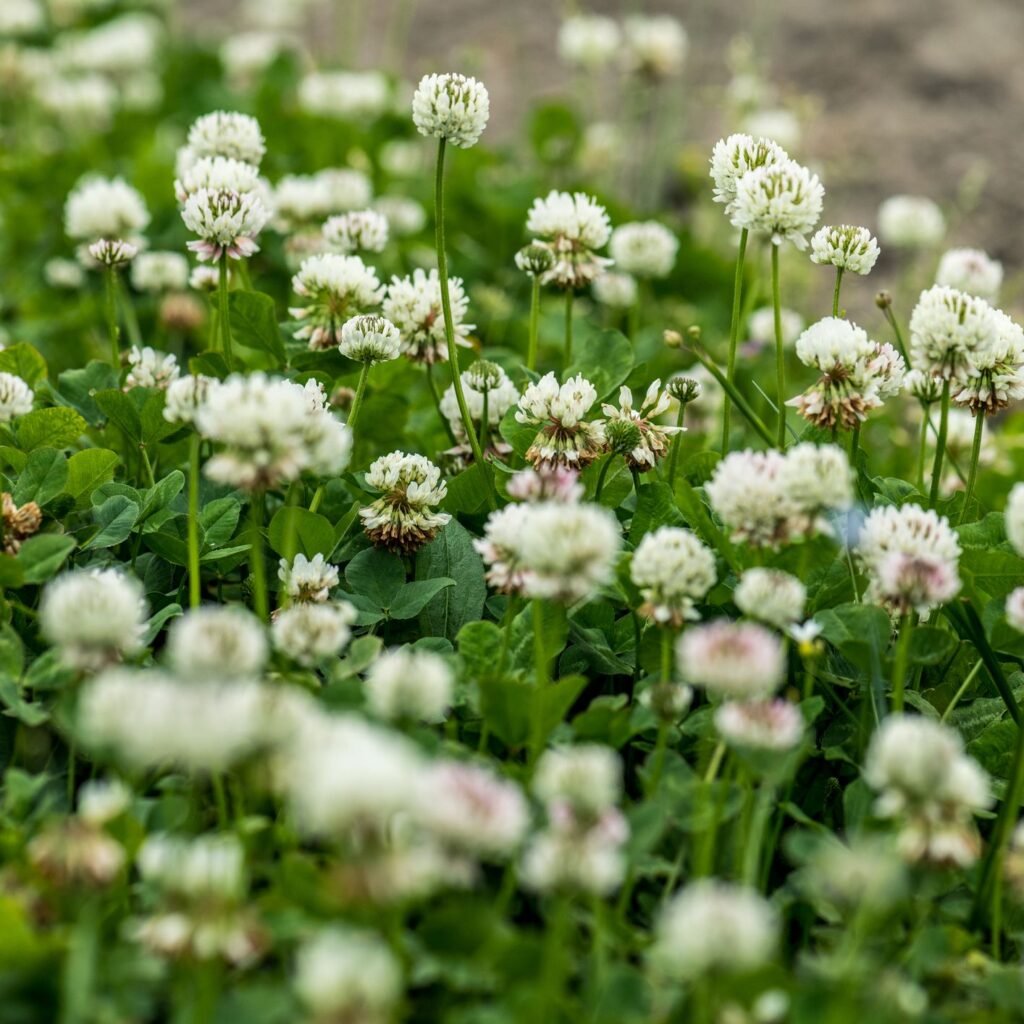
6.1 Clover Has Benefits
It’s true: clover can enrich the soil by fixing nitrogen, stay green during drought, and attract bees and other pollinators. In fact, some homeowners opt for a “bee-friendly” or “eco-lawn” approach and allow a mix of grass and clover.
If you appreciate its benefits and don’t mind its look, you might consider managing it rather than eliminating it.
6.2 Chemical Use Risks
Selective herbicides can impact beneficial insects, soil health, and water quality. Always read labels carefully, apply only as needed, and use the lowest effective dose.
6.3 Cost and Effort
Manual control, soil amendments, and ongoing maintenance require time and financial investment. However, neglecting these actions often leads to more aggressive clover spread—and greater effort later.
7. Conclusion: Clover Control Is About Balance
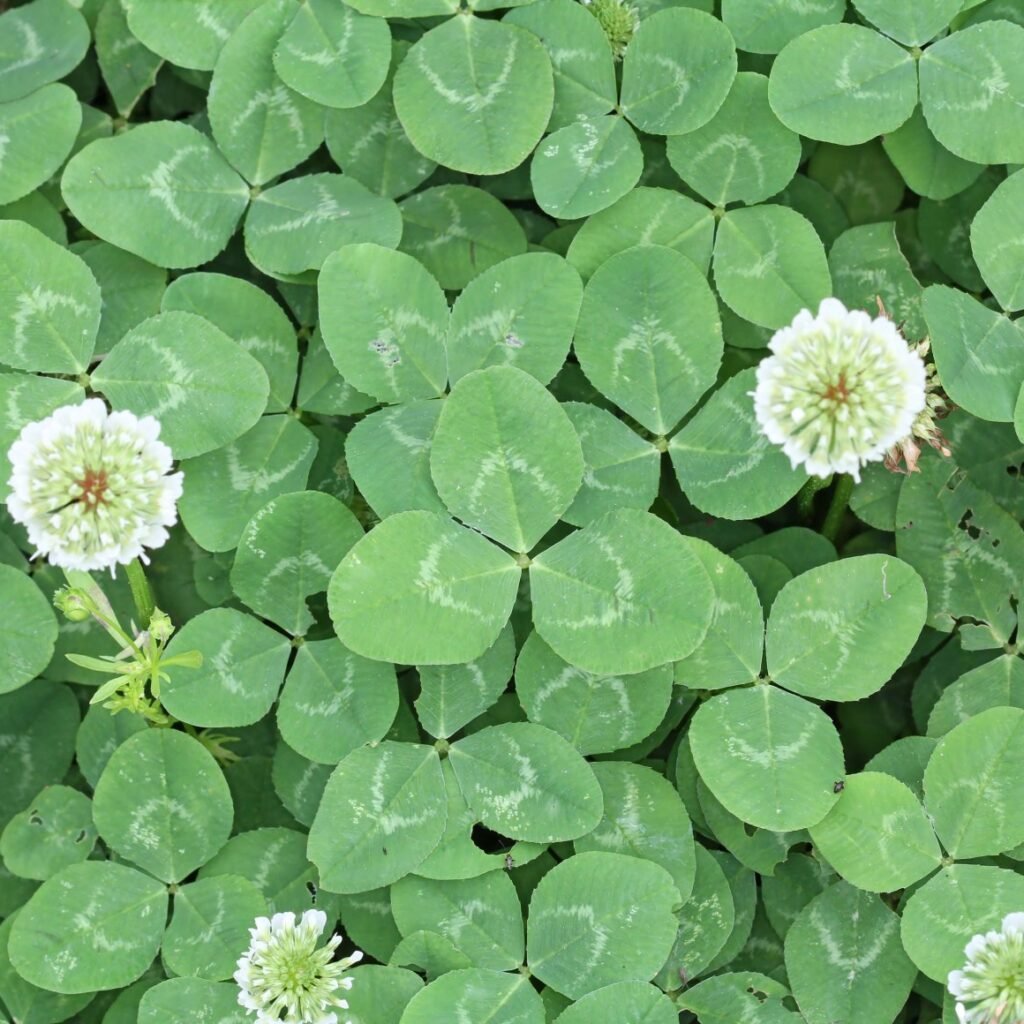
Stopping clover from taking over your lawn isn’t about waging war—it’s about creating a lawn environment where grass naturally thrives and weeds can’t get a foothold.
To reduce clover long-term:
- Improve soil conditions.
- Mow higher and seed thickly.
- Use natural pre-emergents like corn gluten meal.
- Spot-treat large infestations with selective herbicides.
- Maintain healthy turf all year.
By combining these approaches and staying consistent, you’ll gradually reclaim your lawn—and enjoy the process of creating a more resilient, vibrant green space.
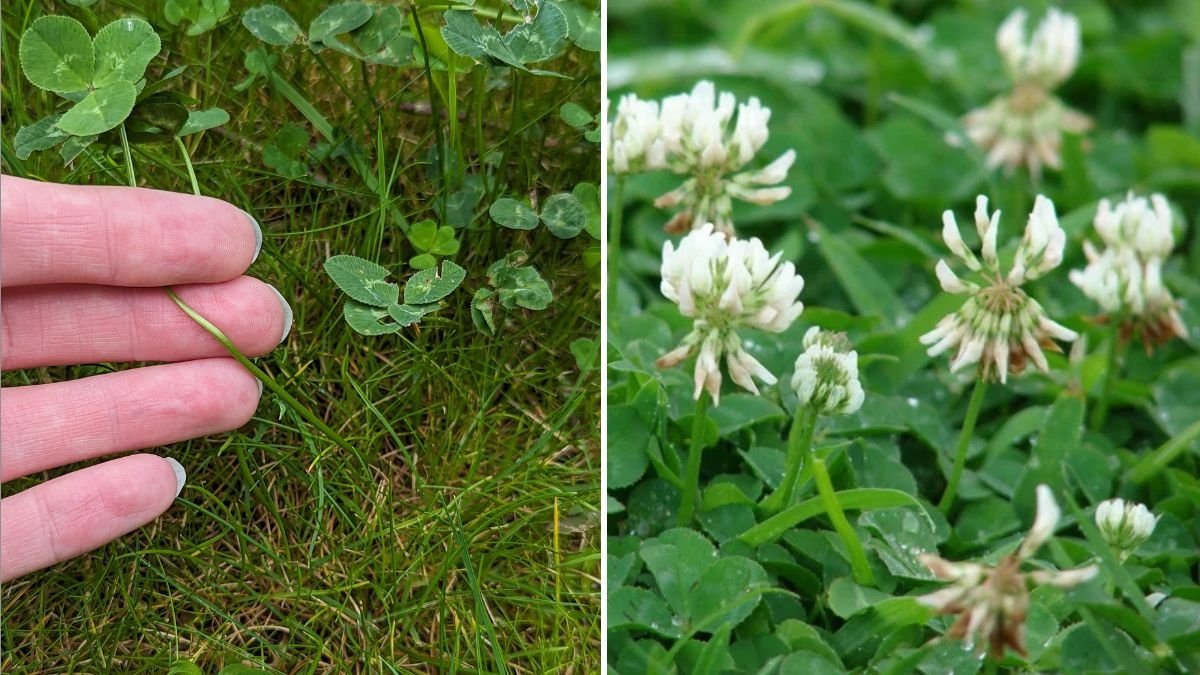





Leave A Comment